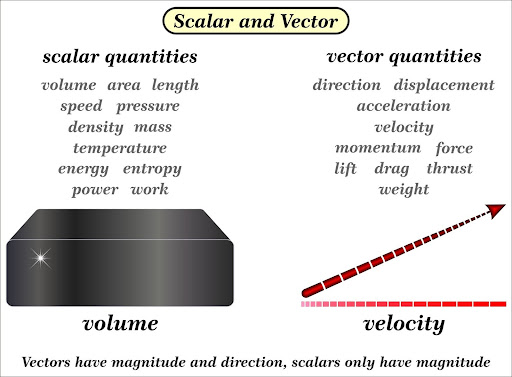
Suppose you’re curious about the world around you and love asking “why” and “how,” you’re already on your way to thinking like a scientist! One of the most exciting subjects in science is physics, the study of how things move and interact in our world. Today, we’re going to explore a question that will get your mind buzzing: Is velocity a vector or scalar? Whether you’re experimenting with physics concepts or coming up with Elf On The Shelf Science Ideas, understanding velocity will make your scientific adventures even more fun! Let’s dive in with some kid-friendly examples and ideas to help you understand.
What Is Velocity?

First, let’s break down the word velocity. It might sound like a complicated term, but it’s actually something you experience every day. Have you ever been in a car and wondered how fast you’re going? Or thrown a ball and watched it speed through the air? That’s velocity in action!
In simple terms, Velocity is how fast something moves in a certain direction.
For example, if a car is traveling north at 60 miles per hour, its velocity is 60 mph north. The “north” part is key because it tells us the direction.
Scalar vs. Vector: What’s the Difference?

Now let’s talk about these two words: scalar and vector. These terms help us categorize measurements in physics, like velocity and speed.
- Scalar: A scalar only tells us how much of something there is.
- Example: If you know the temperature is 25 degrees Celsius, you know it’s warm outside. You don’t need to know which direction the heat is coming from.
- Vector: A vector tells us both how much and which direction.
- Example: If you’re flying a kite, you not only want to know the wind speed (how strong the wind is) but also the direction (where the wind is coming from).
So, a scalar is all about the amount, while a vector gives you the amount plus direction.
Speed vs. Velocity: Are They the Same?
Now you might be wondering, “What’s the difference between speed and velocity?”
- Speed is a scalar quantity. It only tells us how fast something is moving, not in which direction.
- Example: If a car is moving at 50 miles per hour, that’s its speed. We don’t know if it’s going north, south, or spinning in circles!
- Velocity is a vector quantity. It tells us both the speed and the direction.
- Example: If the same car is moving at 50 mph north, we now know its velocity.
Is Velocity a Vector or Scalar?
Here’s the big reveal: velocity is a vector!
That’s because velocity not only tells you how fast something is moving but also the direction it’s heading in. Without the direction, you’d only be talking about speed.
Kid-Friendly Example: Race Car on a Track
Imagine you’re watching a race car zoom around a circular track. The speedometer shows 100 mph. That’s the car’s speed.
But what if someone asked, “What’s the car’s velocity?” To answer that, you’d need to say how fast it’s going and which direction, like 100 mph east or west. As the car goes around the track, its velocity keeps changing because it’s constantly changing direction.
Recommended Reading: Interesting Science Experiments Your Children Can Try
Why Does Velocity Matter?
Understanding velocity can help you in many real-life situations. For instance:
- Driving a Car: When you drive, it’s important to know not only how fast you’re going but also the direction. After all, going 60 mph in the wrong direction might not be very helpful!
- Flying a Plane: Pilots need to know both their speed and direction to safely fly passengers to their destination.
- Sports: Whether you’re playing soccer, basketball, or any other sport, velocity helps you predict where the ball will go. If you know how fast a soccer ball is kicked and in what direction, you can better aim or block it!
How to Calculate Velocity
You don’t need to be a grown-up to understand how velocity is calculated. It’s actually quite simple.
The formula is:
Velocity = Distance / Time
But remember, velocity isn’t just about speed; it also includes direction.
Kid-Friendly Example: Bicycle Ride
Let’s say you ride your bike 10 miles in 2 hours. Using the formula:
Velocity = 10 miles / 2 hours = 5 miles per hour
But wait! You’re not done yet. You need to add your direction, like north. So, your velocity is 5 mph north.What Happens When Velocity Changes?
When the velocity of an object changes, we call this acceleration. If you speed up, slow down, or change direction, you’re accelerating.
Kid-Friendly Example: Roller Coaster
Think of a roller coaster. At one moment, it’s speeding up as it climbs a hill, and then it zooms down, changing both speed and direction. That’s an exciting example of acceleration! Even if the roller coaster is moving at a constant speed, its velocity is changing as it twists and turns on the track.
Fun Facts About Velocity
- The Speed of Light: Did you know that light travels at a velocity of about 186,282 miles per second? That’s fast enough to travel around the Earth 7.5 times in just one second!
- Space Travel: Astronauts in the International Space Station (ISS) orbit Earth at a velocity of about 17,500 miles per hour. That’s fast enough to circle the globe every 90 minutes!
- Animals and Velocity: The peregrine falcon is the fastest bird, diving at velocities of over 240 miles per hour! That’s faster than most cars on the highway.
Why Learning About Velocity is Important
Understanding velocity helps us make sense of how things move. It’s essential in:
- Engineering: When designing cars, airplanes, and rockets.
- Sports: To improve performance by analyzing how fast and in what direction athletes or objects move.
- Everyday Life: From riding your bike to crossing the street safely, velocity plays a role in how we interact with the world.
Recap: Is Velocity a Vector or Scalar?
Now you know that velocity is a vector because it tells us both the speed of something and its direction. Unlike speed, which is just about how fast something is moving, velocity gives us the full picture.
Conclusion
Whether you’re watching a race, flying a kite, or just walking to school, velocity is all around you. It helps us understand the world better and make smarter decisions about movement. Now that you know the difference between scalars and vectors, you’re one step closer to mastering physics!
By making physics fun and easy to understand, you can see how science connects to your everyday life. The next time you wonder how fast or in what direction something is moving, remember: you’re thinking about velocity!
Looking for a comprehensive parenting guide to ensure you are on the right track? Explore a wealth of parenting wisdom and educational insights in Moonpreneur’s blogs. Additionally, you can join our programs that nurture the next generation of innovators. Book a free trial now!


























One interesting addition that could be valuable is explaining how velocity can also affect things like projectile motion, which is common in sports like basketball or soccer. Understanding both the vertical and horizontal components of velocity when you throw a ball or shoot a hoop would tie in nicely with the sports example mentioned! Keep up the great work making physics exciting and accessible!
How does the velocity of a moving car differ at a specific moment versus its overall journey? Including this might make the explanation even more comprehensive for kids learning these concepts. Could you clarify this point?
The instantaneous velocity of a moving car is its speed and direction at a specific moment, like what the speedometer shows. The average velocity is the overall speed The instantaneous velocity of a moving car is its speed and direction at a specific moment, like what the speedometer shows. The average velocity is the overall speed and direction during the whole trip. Knowing both helps kids understand how speed can change while driving!